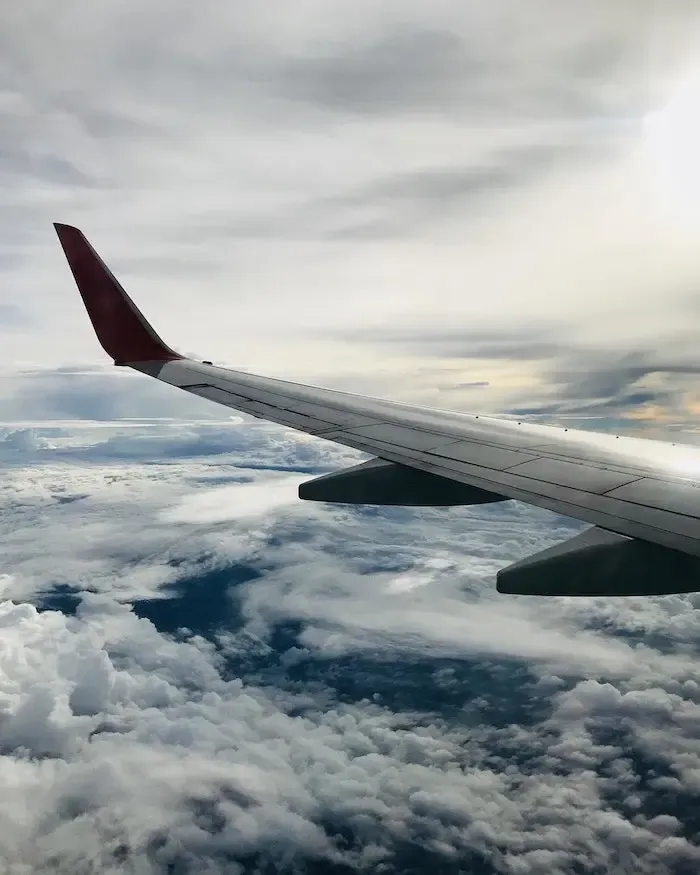Airplane Packing List: How to Pack for a Flight
Stay Relaxed on Your Flight with these essential items to carry on
Preparing for a flight can be an exciting, yet also nerve wracking, especially when it comes to deciding what to pack in your carry-on suitcase. Whether you’re a seasoned traveler, knowing the essential items to bring with you in your cabin baggage is crucial for a smooth and enjoyable journey.

The Must do’s Before Arriving The Airport
You may not be Dasha Nekrasova and that’s ok, it’s not for everyone to smoke a joint before going to the aiport to make the whole experience more exciting.
You may be a bit more normal and want everything to go as planned on Flight Day. To achieve this, we have
5 Things to Check Before Leaving Your House To The Airport
-
Travel Documents
Ensure you have all necessary travel documents, including your passport, visa (if required), boarding pass, and any relevant identification. Double-check the expiration dates and keep them organized in a secure travel wallet or folder.
-
Flight Details
Verify your flight details, including the departure time, gate, and terminal. Make sure you have the most up-to-date information, as flight schedules can change.
-
Packing Checklist
Review your packing checklist to ensure you haven’t forgotten essential items like chargers, medications, travel adapters, and any specialized equipment or documents for your trip.
-
Home Security
Secure your home by locking all doors and windows, setting the alarm system if you have one, and notifying a trusted neighbor or friend that you’ll be away. Double-check that appliances and lights are turned off to save energy and prevent accidents.
-
Transportation
Confirm your transportation to the airport, whether it’s a taxi, ride-sharing service, or a friend giving you a lift. Ensure you have enough time allocated for potential traffic or delays.
What can you bring to make your flight more comfortable?
Travel Pillow
A travel pillow is like a fluffy cloud for your head when you’re on a flight. It’s a savior for your neck, making those cramped seats feel a tad comfier. You won’t be bobbing around like a head-banger trying to sleep, and trust me, your fellow passengers will appreciate it too.
A Reusable Water Bottle
This one’s a game-changer. Airplane air can turn your throat into the Sahara, so having a reusable water bottle keeps you hydrated without the flight attendant judging you for asking for the tenth cup of water. Plus, it’s eco-friendly, so you’re saving the planet while staying refreshed.
Noise-Cancelling Headphones
Ever been stuck next to a chatty Cathy or a crying baby on a flight? Noise-canceling headphones are your golden ticket to a quiet oasis. Pop these bad boys on, and suddenly, you’re in your own world, free from the chaos of the cabin. Peace and quiet, at last.
A Blanket
Airplanes can get chilly, and those flimsy airline blankets just don’t cut it. Bring your cozy blanket from home, and you’ll be snug as a bug in a rug. Plus, it doubles as a privacy shield for when you want to nap without judgmental eyes on you.
Compact Foot Hammock
Who knew you could elevate your in-flight experience without paying for first class? A compact foot hammock attaches to your tray table, giving you a place to rest your feet. It’s like a personal hammock for your legs, making long flights feel a lot less like torture.
Reusable Bamboo Cutlery Set
Flex on your flight. Tired of plastic utensils stabbing your conscience? A reusable bamboo cutlery set is a guilt-free way to enjoy your in-flight meal. It’s lightweight, eco-friendly, and ensures you won’t be the person who accidentally snaps their plastic fork while trying to eat that stubborn piece of chicken. Plus, it’s stylish – you’ll be the envy of your row.
The 5 Unspoken Rules Airlines Hope You Ignore
Here there are 5 tips that will set you apart from the rest of the boarders, make sure to be aware of them
-
Overbooking
Airlines often overbook flights, hoping that not everyone with a reservation will show up. This practice can lead to overcapacity and the need for volunteers to give up their seats. While compensation is offered, passengers should be aware that they have rights in such situations, including compensation for delays and missed connections. -
Hidden Fees
Airlines are known for charging additional fees for various services, such as baggage, seat selection, and in-flight amenities. They hope passengers won’t scrutinize the fine print and end up paying more than they initially bargained for. Travelers should carefully read the terms and conditions and be prepared for these potential extra costs. -
Change and Cancellation Fees
Changing or canceling a flight often comes with hefty fees. Airlines rely on passengers not realizing the cost or not fully understanding the flexibility of their ticket. It’s essential to be aware of the fare rules and consider travel insurance for added protection. -
Overhead Bin Space
Airlines may hope passengers won’t notice that they sometimes prioritize cabin baggage space for premium cabin passengers or passengers who pay for priority boarding. This can lead to frustration for economy class travelers who may have to gate-check their bags. To secure overhead bin space, boarding early or traveling with a smaller bag can help. -
Seat Reclining
While passengers have the right to recline their seats, it can lead to discomfort for the person seated behind them. Airlines might not explicitly discourage reclining, but they do hope passengers won’t cause tension with their fellow travelers. Passengers should use their judgment and consider the comfort of those around them when reclining.
How to Get a good Seat on the plane
You can typically complete your online check-in 24 hours prior to your flight, allowing you to secure your preferred seat.
If you plan to rest during the flight, a window seat allows you to lean against the cabin wall. On the other hand, if you prefer easy access to the aisle for moving around or frequent restroom visits, an aisle seat is more suitable. Personally, I’m not a fan of the middle seat. (What are your seat preferences?)
When it comes to seating arrangements, a 2-4-2 configuration is often used, making it convenient for families or groups traveling together. If you’re exceptionally fortunate, you might have the opportunity to sleep in one of the vacant middle seats.
Additionally, it’s a good idea to check if your chosen seat has a power outlet. The airline’s website typically provides information about the in-flight entertainment options, with TV on demand being the preferable choice. The older entertainment system is akin to a DVD player, where everyone watches the same content simultaneously, preventing you from pausing or rewinding.
Reaching Your Destination Safe
When Arriving
- Due to cabin pressurization, you may experience ear discomfort during landing.
- Remedies for ear discomfort include yawning, swallowing (consider chewing gum or having a boiled sweet), or equalizing ear pressure by pinching your nose and gently exhaling through it. For severe discomfort, consider taking a decongestant about an hour before landing.
- After disembarking, you may be directed to a shuttle bus or allowed to walk to the arrivals terminal.
In the Terminal
- Head to immigration, unless your flight is domestic within the same country, where they will check your passport and necessary visas.
- Proceed to the baggage claim area, where larger airports typically display flight numbers and corresponding baggage carousels. Wait for your luggage and verify the tags to ensure you have the correct bag.
- Pass through customs on the “green side” (check duty-free limits beforehand), which will lead you into the arrivals area.
- Look for signs offering information about taxis, buses, and trains.
- Exit through the doors to enter the new country.



